Last week, on a hot January morning I found myself on the Goulburn with a mate searching for trout in the most unlikely of locations. Many would question our logic when fishing for trout, thinking that perhaps it is out in the current, through the riffles and in the pools that one should be casting. But, we were searching for a different type of fish, the Goulburn backwater brown.
With plenty of fish having been spotted, and many worked on in a tag-team approach with one man working as a spotter whilst the other presented to the fish, we had spooked a number of good sized brutes and Shane had landed one good brown from a very tough lie. I had one fish take five flies in a row only to have them pulled from his mouth on a downstream take. Amazingly he went back to feeding after the first four attempts, the fifth just pissed him off. But, it was later in the afternoon that the real gem of the day was discovered. A fairly still backwater with a gentle current coming under a willow tree about ten feet from the bank… with a healthy looking brown sipping bugs from the surface right behind the willow. The problems were plenty though, with a ten foot high bank right next to where the fish was holding, overhanging branches all around the backwater and trees right behind ruling out a possible casting position. The only hope was a side-on casting position from down the bank.
So, I removed the non essentials from my vest to reduce clutter and movement and trimmed the bottom hackle form a humpy pattern to get it riding low in the film. “Are you nervous?” Shane asked, as I prepared to move down the bank. “Not really” came my reply. We both new I was probably going to stuff this up and spook the fish before I even had a chance to present the fly, so nerves didn’t really play a part in it. This fish would be there another day if that happened, so I wasn’t too bothered. Just keen to see if I could pull it off.
So, carefully I slid down the steep bank to place myself in the mud right on the edge off the water, with the fish sliding back in the current occasionally, forcing me to hold still as I came into his line of sight. Then, once in what could be described as one of the worst casting positions ever sought, I watched for a little while longer to make sure he was still unaware of my presence. And he kept feeding, which was a good sign. As I gingerly stripped line out from my reel to afford me enough for a cast, I attempted to get then line moving in the air only to catch the trees to my right before I had even placed one cast. That should have been it, but the fly dislodged easily enough and I was able to get a cast just behind the fish that went unnoticed. A second cast fell left, but a little longer and got his attention as he turned to the fly, followed it and pushed it up out of the water with his nose. Done. He turned away and went back to his position.
“Change flies!” came the call from up on the bank, but I thought another attempt was worth a shot. This time I got the fly to land as far in front of the fish as was possible without ending up in the willow, about 12 inches in front of his nose and it just drifted over him. But, again he turned and chased it downstream only to nudge it with his nose again and return home. Clever fish. So, I switched up to a size 20 parachute Adams, thinking this might do teh trick given that he was sipping from the surface. Several casts that fell short went unnoticed, except a smaller fish had come up from behind and had a go at this fly. I quickly dragged it out of the path of the second fish knowing all too well that a take from this guy would surely spook the bigger target fish. Then the cry from the bank cam out again.
“Don’t move!”. As I looked down, a third fish had entered the backwater, this one was casually moving along the edge of the bank in the shallow water, headed right for me. It passed by my right leg and then turned, it’s head looking right up at me from between my too submerged legs. It then proceeded to pass me, and turn back, bumping into my left knee in the process, completely unaware of my presence. I could have netted the guy right then and there, had I not left my net further up the bank and out of reach. This was truly a remarkable moment between man and fish, when all one could do was try to remember to breath and not move a muscle.
Given this incident, I thought I’d tie on a stick caddis and sit it about four inched below the surface under a tiny indicator, thinking that if this bigger fish pulled out and away from me I could possibly present a cast to him. By the time I had prepared the rig, he had skulked off under the trees and left me with just the other too fish still feeding right in front of me. So, back to the main target who, having already had me present about 15 casts at him was still nonchalantly holding his turf, feeding at his own pleasure. So, I gave the stick caddis a trying, just about bouncing it off his head a few times only to have him completely ignore it and almost catching the second fish as it chased the fly on my hasty removal of it from the area. Something a little more drastic was required. Given the amount of cicadas in the trees and Shane’s incessant nagging for my to tie on a cicad pattern, I thought about it but had had no luck with the hook-ups on that pattern all day, so the confidence was low. Yet, the impossible fish was still right in front of my. So, I decided to go with a deer hair cricket pattern. It was lightweight enough for the tight cast with the 5 weight glass and it was black, like the cicadas found in the area. So it seemed like the right choice. Furthermore, it had enough mass to it to deliver a bit of a plop as it hits the water’s surface, which was just what I wanted. So, with the cricket tied on, I went about the cast and put it right into the tree behind me. Bugger. I was able to remove it without losing the fly or spooking the fish and stopped for a moment before my next attempt. Then, with the right amount of line out, and a flicking sort of roll cast that would have won no awards anywhere, I managed to land the cricket just to the left of the fish, about six inches away from him. He immediately turned on the cricket and slashed at it, taking hte fly beneath the surface. I carefully lifted the rod away up and to the right until felt tension then stripped hard with my left hand to set the hook as he shot out towards the current. Fish on!
Now I was able to get get nervous. He shot straight out to the fast water and headed downstream for the trees, with me unable to move from where I was I had to put the breaks on and hope my knots didn’t give way. Of course, the Ben’s Fly Rods glass rod I use had a lot to do with this fish getting landed as the amazing bend and soft tip of this rod meant I had that extra tippet protection with every sharp dash he made. I got a hold of the situation and managed to get him back up level with me and into the slower water as Shane came sliding down the bank with the net. Then it go worse as he headed upstream right for the trees the my left to try and dust me off in there. Only able to lift my rod up to about a ten o’clock position due to the overhanging branches and with only the leader out in front of the guides, it was a tense few minutes as he shot in and out trying to leave me weeping. A few missed attempts with the net saw me miss a few heartbeats as well. But, eventually, as I crawled up the bank Shane was able to get him into the net to a thunderous applause and a load of expletives from yours truly.
That was what it is all about, that is backwater brown trout fishing. The searching, the watching, the planning, the presentation, and the fight all lead to the moment where to the victor go the spoils and I was able to hold the trophy for less than a minute before letting him swim free with plenty of kick still left in him. An hour’s work for a moment’s reward, and all the other dropped fish from earlier in the day did not matter any more. I can’t wait to get back and search for the big guy that cruised past!

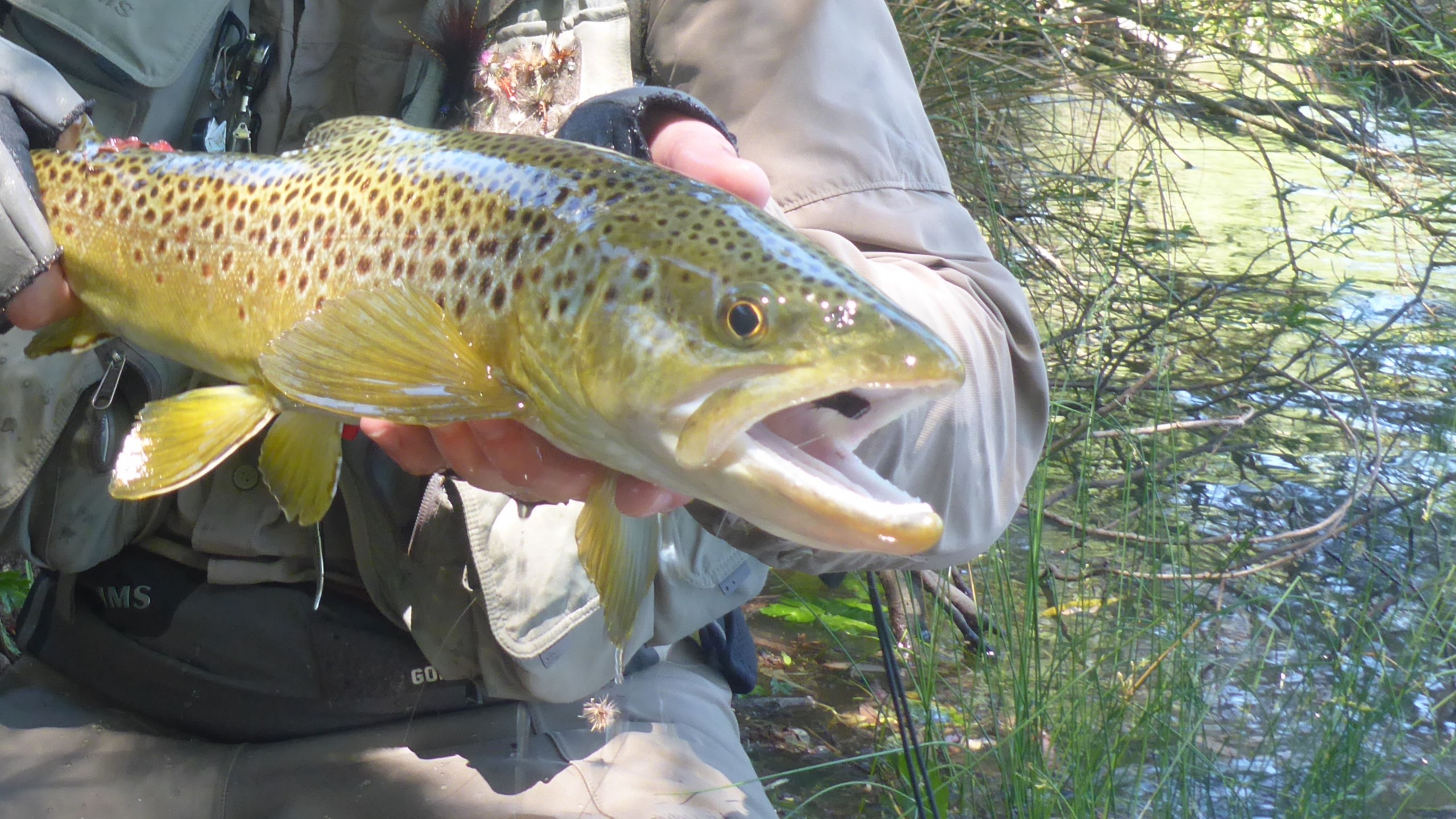
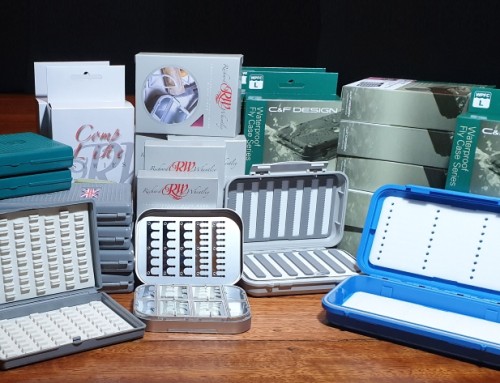
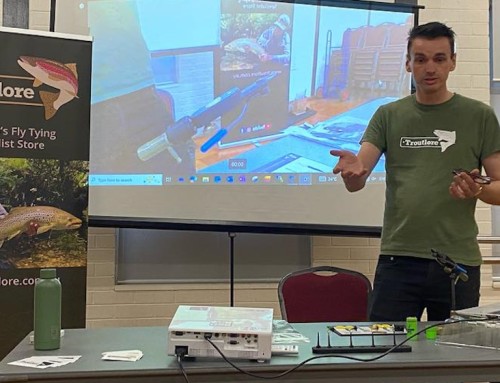
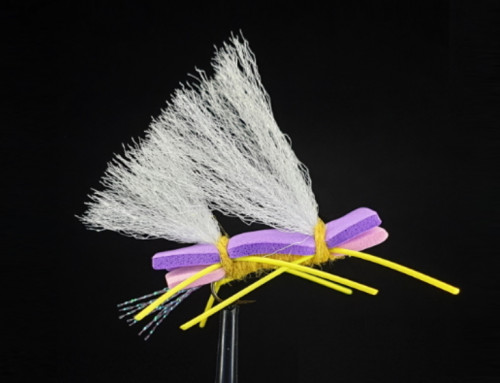

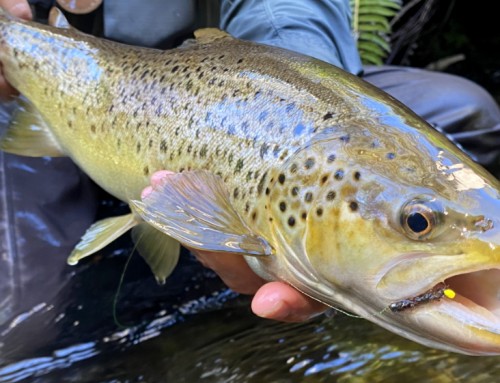
Leave A Comment
You must be logged in to post a comment.